|
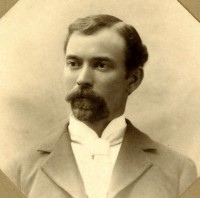 Frank Marian Anderson (1863-1945) in 1905 defined most of the geologic formations that are in use today for the west side of the San Joaquin Valley, including the Tulare,
San Joaquin,
Etchegoin,
Temblor and
Kreyenhagen Formations. He also defined the Buttonbed Sandstone, which he designated as the top member of the Temblor, and he named Buttonbed Hill, a famous fossil collecting locality, as the type section.
Frank Marian Anderson (1863-1945) in 1905 defined most of the geologic formations that are in use today for the west side of the San Joaquin Valley, including the Tulare,
San Joaquin,
Etchegoin,
Temblor and
Kreyenhagen Formations. He also defined the Buttonbed Sandstone, which he designated as the top member of the Temblor, and he named Buttonbed Hill, a famous fossil collecting locality, as the type section.
|
|
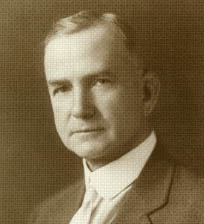 Ralph Arnold (1875-1961) was a field geologist for the U.S. Geological Survey (USGS). He formalized much of the stratigraphy for the San Joaquin Valley, and was lead author of classic USGS papers on the Coalinga (Bulletin 398, 1910) and McKittrick-Sunset oil regions (Bulletin 406, 1910). He was also one of the first to propose in an organic orgin for oil, writing in 1907that most oils produced in California appeared to be sourced from organic-rich shales of the Mocene Monterey Formation.
Ralph Arnold (1875-1961) was a field geologist for the U.S. Geological Survey (USGS). He formalized much of the stratigraphy for the San Joaquin Valley, and was lead author of classic USGS papers on the Coalinga (Bulletin 398, 1910) and McKittrick-Sunset oil regions (Bulletin 406, 1910). He was also one of the first to propose in an organic orgin for oil, writing in 1907that most oils produced in California appeared to be sourced from organic-rich shales of the Mocene Monterey Formation.
|
|
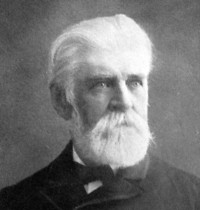 William Phipps Blake (1826-1910) was the geologist for the Pacific Railroad Exploring Expedition of 1853 to California, and prepared the first detailed reports on the geology of the state. He discovered during this expedition the famous Sharktooth Hill fossil collecting locality near Bakersfield, and became the first geologist to collect and catalog specimens from the site. He was also the first geologist to use the name "Monterey Formation".
William Phipps Blake (1826-1910) was the geologist for the Pacific Railroad Exploring Expedition of 1853 to California, and prepared the first detailed reports on the geology of the state. He discovered during this expedition the famous Sharktooth Hill fossil collecting locality near Bakersfield, and became the first geologist to collect and catalog specimens from the site. He was also the first geologist to use the name "Monterey Formation".
|
|
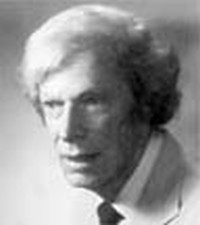 Thomas Wilson Dibblee, Jr. (1911-2003) began mapping rocks as a hobby in the 1920s on his parents ranch in Santa Barbara, and he continued his love of mapping during a long career with the Atlantic Richfield Oil Company (ARCO) and the U.S. Geological Survey. He eventually made the first detailed maps for much of California, including the entire west side of the San Joaquin Valley. Today, Dibblee's maps still remain the authoritative sources for the surface geology in most of California.
Thomas Wilson Dibblee, Jr. (1911-2003) began mapping rocks as a hobby in the 1920s on his parents ranch in Santa Barbara, and he continued his love of mapping during a long career with the Atlantic Richfield Oil Company (ARCO) and the U.S. Geological Survey. He eventually made the first detailed maps for much of California, including the entire west side of the San Joaquin Valley. Today, Dibblee's maps still remain the authoritative sources for the surface geology in most of California.
|
|
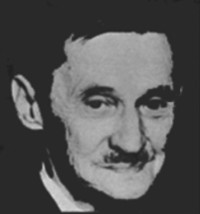 Paul Pavel Goudkoff (1880-1955) was a Russian geology professor who emigrated to California in the early 1920s and pioneered the use of micropaleontology to correlate between oil wells. He was in fact the first geologist to use the term "micropaleontology" in a publication. His ability to predict at what depth an oil company could expect to drill into a given oil reservoir made him a superstar in the industry. He was also one of the founders and early presidents of the Society for Economic Paleontology and Mineralogy (SEPM).
Paul Pavel Goudkoff (1880-1955) was a Russian geology professor who emigrated to California in the early 1920s and pioneered the use of micropaleontology to correlate between oil wells. He was in fact the first geologist to use the term "micropaleontology" in a publication. His ability to predict at what depth an oil company could expect to drill into a given oil reservoir made him a superstar in the industry. He was also one of the founders and early presidents of the Society for Economic Paleontology and Mineralogy (SEPM).
|
|
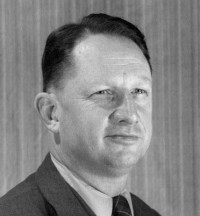 Robert Minssen Kleinpell (1905-1986) was a micropaleontologist who did much of the pioneering work on the Miocene biostratigraphy (i.e., the Monterey and Temblor Formations) of California. He spent the early part of his career in the oil industry, and he was a professor of Paleontology from 1946 on at the University of California at Berkeley. His 1938 book on the Miocene Stratigraphy of California is considered the authoritative reference on the subject.
Robert Minssen Kleinpell (1905-1986) was a micropaleontologist who did much of the pioneering work on the Miocene biostratigraphy (i.e., the Monterey and Temblor Formations) of California. He spent the early part of his career in the oil industry, and he was a professor of Paleontology from 1946 on at the University of California at Berkeley. His 1938 book on the Miocene Stratigraphy of California is considered the authoritative reference on the subject.
|
|
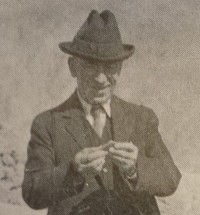 Charles Morrice (1861-1944) was a Scottish accountant and amateur paleotologist who worked as a clerk for the Pacific Oil Company at the Kern River oil field in Bakersfield. He collected fossils from Sharktooth Hill in his spare time and amassed a huge collection that he freely gave away to many of the scientific institutions of the day. Though never trained as a geologist, he made major contributions to our understanding of the Sharktooth Hill fossil fauna.
Charles Morrice (1861-1944) was a Scottish accountant and amateur paleotologist who worked as a clerk for the Pacific Oil Company at the Kern River oil field in Bakersfield. He collected fossils from Sharktooth Hill in his spare time and amassed a huge collection that he freely gave away to many of the scientific institutions of the day. Though never trained as a geologist, he made major contributions to our understanding of the Sharktooth Hill fossil fauna.
|
|
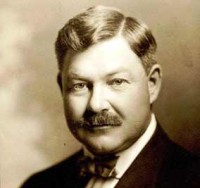 William Warren Orcutt (1869-1942) is considered to be the first true petroleum geologist. He graduated with a degree in geology from Stanford University, and was hired by Union Oil Company (Unocal), for whom he organized the first oil company geology department. Union's success in finding oil was directly attributable to Orcutt and his staff, and led other oil companies to start up their own geology departments.
William Warren Orcutt (1869-1942) is considered to be the first true petroleum geologist. He graduated with a degree in geology from Stanford University, and was hired by Union Oil Company (Unocal), for whom he organized the first oil company geology department. Union's success in finding oil was directly attributable to Orcutt and his staff, and led other oil companies to start up their own geology departments.
|
|
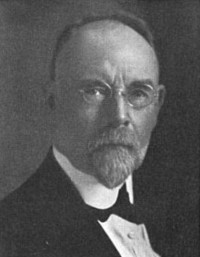 William Lord Watts (1850-1921) was born and educated in England, Watts was commissioned in 1894 by the State Mining Bureau at the request of the Los Angeles Chamber of Commerce to study the oil and gas yielding formations of the Los Angeles Basin. He went on to prepare reports for the Bureau on the oil geology for both the southern California area (1896) and the state at large (1900). A true adventurer, he was not only versed in the geology of the California and Nevada, but he also studied and published on the geology of Iceland.
William Lord Watts (1850-1921) was born and educated in England, Watts was commissioned in 1894 by the State Mining Bureau at the request of the Los Angeles Chamber of Commerce to study the oil and gas yielding formations of the Los Angeles Basin. He went on to prepare reports for the Bureau on the oil geology for both the southern California area (1896) and the state at large (1900). A true adventurer, he was not only versed in the geology of the California and Nevada, but he also studied and published on the geology of Iceland.
|